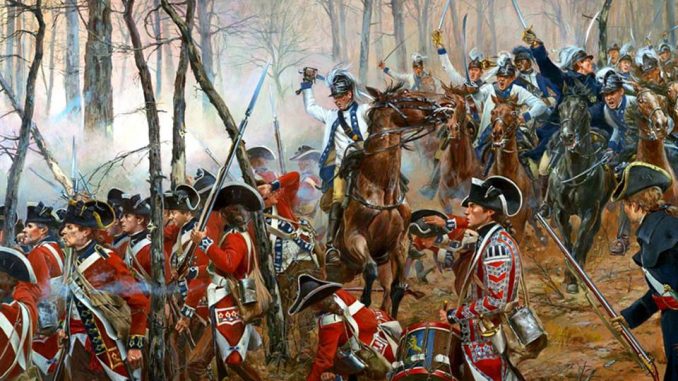
On this day, April 25th in 1781, British General Lord Charles Cornwallis retreats to Wilmington, North Carolina, after being defeated at Guilford Courthouse by 4,500 Continental Army soldiers and militia under the command of American Major General Nathanael Greene.
With Cornwallis’ defeat, the British task of defending North Carolina fell to a young Irish-born nobleman, Francis, Lord Rawdon, an officer of marked ability, who went on to execute an unlikely victory over Greene at Hobkirk’s Hill, a ridge just north of Camden, North Carolina.
Rawdon, who was being provided information on the Continentals’ movements by British Loyalists, learned of the movements of General Greene and his troops. A deserter from the Continental Army informed Rawdon about the precarious supply situation of the Continental Army, and the commander sprung into action. Although outnumbered by a Continental Army of 1,174 men to Rawdon’s 800 British troops, the British managed to surprise Greene and the Continentals at Hobkirk’s Hill. Although casualties were approximately the same on each side, the British won a tactical victory, taking the field. Greene retreated, but managed to save his supplies and artillery, while Rawdon and the British fell back to Charleston, South Carolina.
Upon his return to England, King George III honored Lord Rawdon with his own peerage as Baron Rawdon in March 1783. Six years later, Rawdon added his mother’s surname, Hastings, to his own. With his father’s death in 1793, Rawdon-Hastings became the second earl of Moira. He served as the governor general of India beginning in 1813. Proving his military and diplomatic prowess, he gained Nepal, Marathas and Singapore for the crown. These successes led to yet another new title, the marquess of Hastings.


Be the first to comment